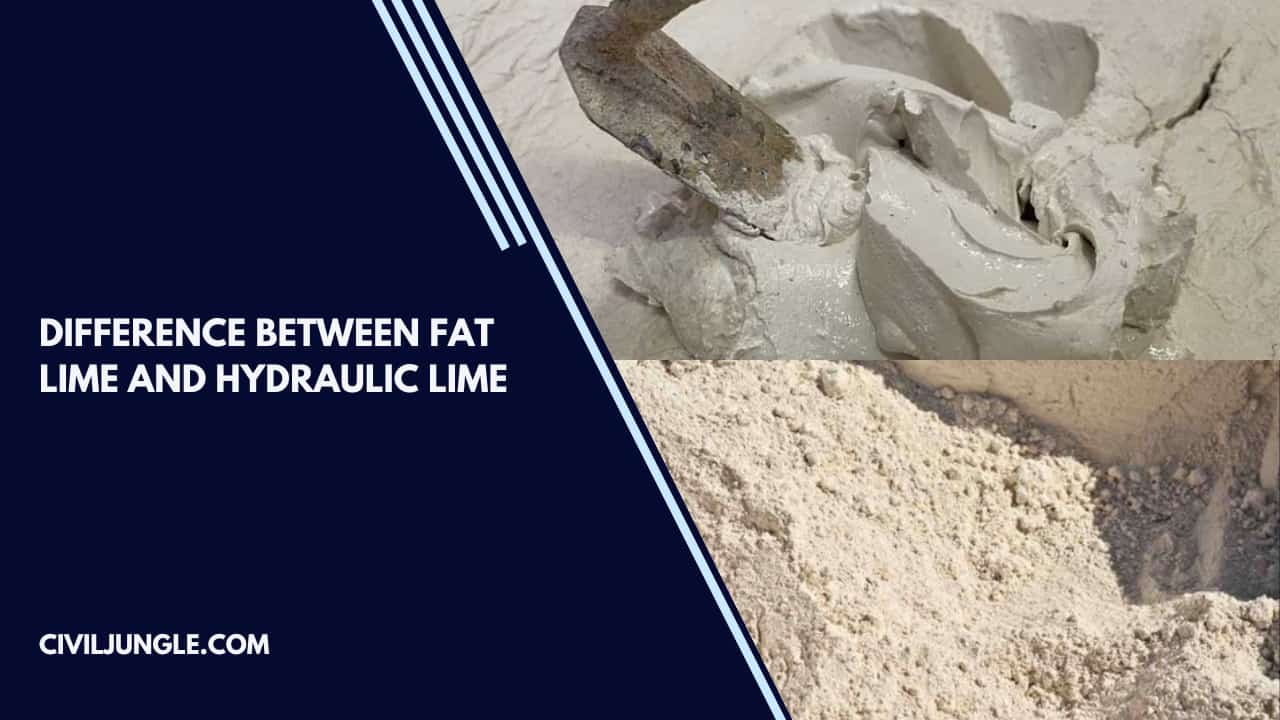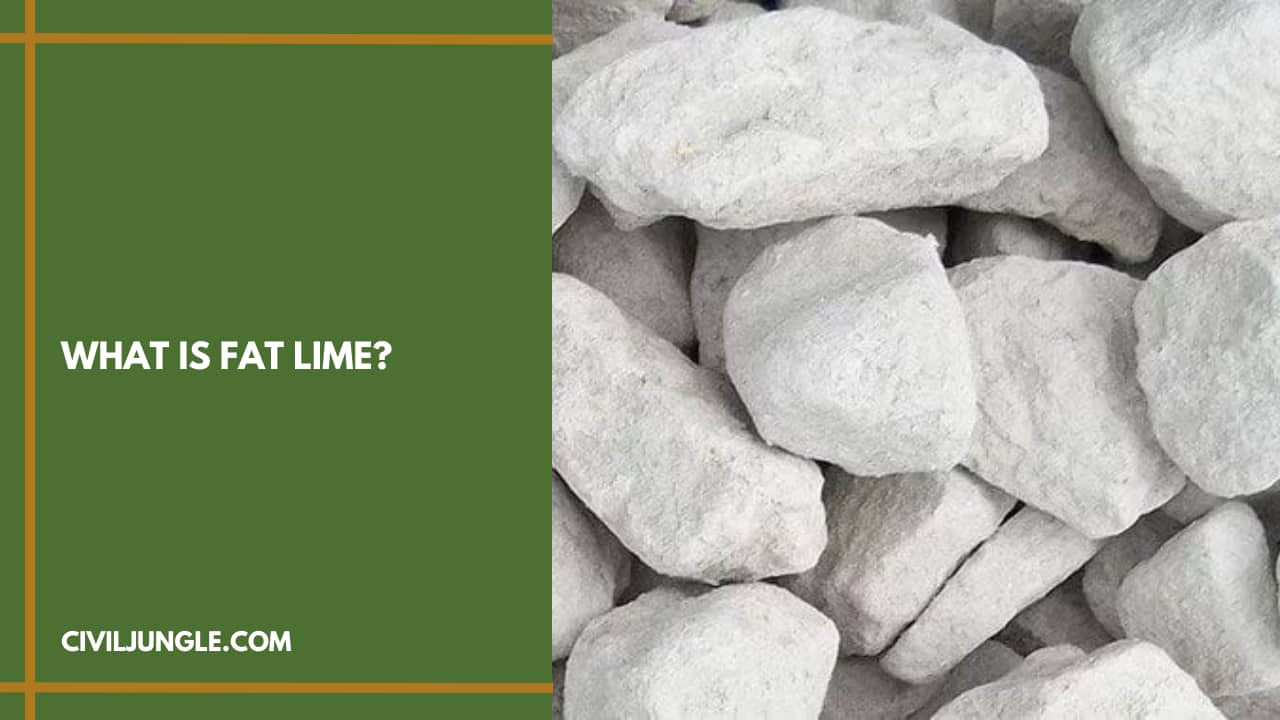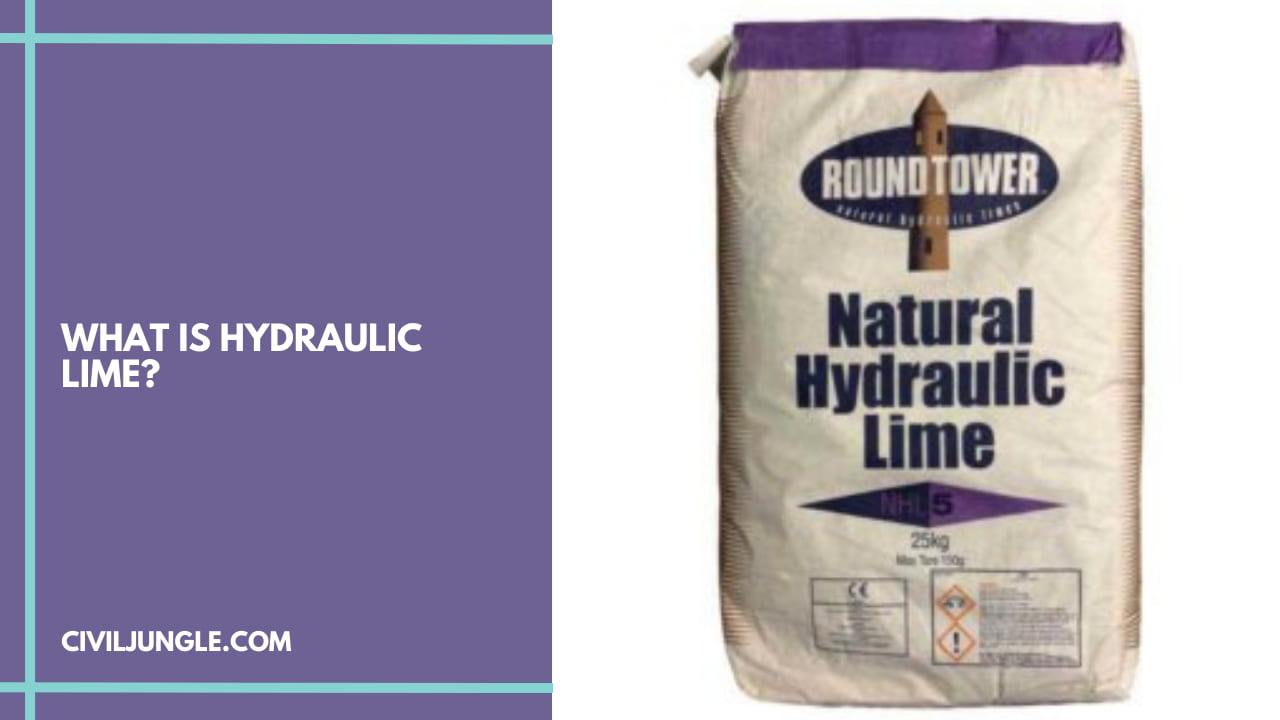What Is Fat Lime?
Important Point
Fat lime is also called Rich lime, High calcium lime, Pure lime, White lime. It is obtained by calculating limestones.
When water is added to this lime, it produces hissing sound, a lot of heat is liberated it cracks and its volume is increased by 2-3 times the presence of air is essential for its setting. Hence it does not set.
- Under water.
- Below Ground.
- In interior joints of a thick wall.
It is used for white-washing, plastering and filling thin joints. Fat lime is highly plastic and is soluble in water.
To improve its hydraulic property, fat lime is mixed with surkhi (Brick powder) such mortar can set even in the absence of air and hence can be used for joints of thick, walls, or works below ground.
Also, read: Difference Between Bitumen and Tar | What Is Bitumen | What Is Tar
Useful Article for You
- What Is a Contour Interval
- What Is a Spread Footing
- What Is a Pitched Roof
- What Is a Parapet
- What Is Rcc Value Day
- What Is a Flight of Stairs
- What Is Leveling
- What Is Grouting
- What Is Flooring
- What Is Gypsum Board
- What Is Cmu in Construction
- What Is Modulus of Rupture
- What Is a Grade Beam
- What Is Tile
- What Is a Bridge Abutment
- What Is a Cold Joint in Concrete
- What Is Porch
- Lime Vs Cement
- What Is the Strongest Foundation for a House
- What Is a Well Point
- What Is Flagstone
What Is Hydraulic Lime?
This lime does not require Co2 from the atmosphere for the setting. Hence it can set under-water. It is used in construction works. Strength is required.
This lime is not suitable for plaster-work because any unslacked particle may slake after some days causting blistering in plaster.
To improve this property this lime is ground to powder and then mixed with sand the mortar thus prepared is kept in a heap for about a week, and it is ground again. Such mortar prepared from hydraulic lime suitable for plaster-work.
Depending upon the percentage of clay content, hydraulic lime is divided into the following types,
Type of Hydraulic Lime.
- Eminently Hydraulic Lime.
- Moderately Hydraulic Lime.
- Feebly Hydraulic Lime.
1. Eminently Hydraulic Lime:
- Clay content – 21 to 30%
- Slaking – Slow with difficulty
- Setting – About 24 hours
- Hyraulicity – Eminent
- Uses – Can be used in important masonry works in place of cement
2. Moderately Hydraulic Lime:
- Clay content – 11 to 20%
- Slaking – After 1.5 hours
- Setting – About one week
- Hyraulicity – Moderate
- Uses – Masonry works
3. Feebly Hydraulic Lime:
- Clay content – 05 to 10%
- Slaking – After few minutes
- Setting – Sets in water after about 3 weeks
- Hyraulicity – Feeble
- Uses – Ordinary masonry works.
Also, read: What Is Classification of Bricks | Classification of Bricks Different Base
Difference Between Fat Lime and Hydraulic Lime
| Detail | Fat Lime | Hydraulic Lime |
|---|---|---|
| Composition | More Percentage of CaO clay content less then 5% | Ca + clay content from 5 to 30 % and some % of iron oxide |
| Slaking | Slakes vigorously with hissing sound and cracking volume increased by 2 to 3 times slaking continues upto 3-4 hours. | Not much heat is liberated. No hissing sound or cracking volume increases by 1.2 times slaking continues up to 1-2 days |
| Setting | Sets slowly in presents of air. Absorbs CO2 from atmosphere and from CACO3. It does not have hydraulicity and hence can not set under water. | Sets under water – CaO content sets like fat lime calcium silicate & crystalline structures are formed they set like cement. It possesses hydraulidty. |
| Strength | It is not strong and hence can not be used where strength is requierd. | It is strong and can be used like cement |
| Use | Plastering, white washing preparing and mortar with surkhi mix. | Suitable for thick walls, works below ground in damp condition |
Fat Lime
Fat lime, whose fat lime formula is primarily Ca(OH)2, which is also called stone-lime or white lime is high calcium lime with about 6 per cent material insoluble in acid, chiefly obtained by burning (called calcination) in a kiln pure limestone, chalk or sea shells, etc. (calcium carbonate).
Hydraulic Lime
A hydraulic lime is made from a limestone that either naturally contains or has artificially introduced some form of amorphous silica in the burning process. This amorphous or “free” silica fuses with some of the quicklime to form a clinker, a cementitious compound.
Fat Lime Vs Hydraulic Lime
The main difference between slaked lime and lime water is in their application and consistency. However, when comparing Fat Lime and Hydraulic Lime, the main difference between the two is the way is which they set. Hydraulic limes set by hydrolysis, a reaction caused by water. Non Hydraulic Limes have various names such as Fat Lime, Lime Putty, Air Lime and set by carbonation. This causes a much slower set and the lime remains softer and more breathable.
Can You Use Hydraulic Lime for Limewash?
Another very interesting form of fine particle suspension limewash is achieved using hydraulic lime, the form of lime which sets on addition of water. The particle sizes can, with time, be as little as 1-3 microns.
Which Lime Is Best for Construction?
Slaked lime when exposed to the atmosphere, absorbs carbonic acid in the presence of water content. It is also called as calcium hydroxide or calcium hydrate or lime hydrate. Slaked lime formed by adding quick lime and water gives a slurry material. This is highly suitable for mortar applications.
Like this post? Share it with your friends!
Suggested Read –
- What Is Consistency
- West Point Bridge Designer
- What Is Plaster | Type of Plaster | Defects In Plastering
- What are Traps | What Does Trap do | 12 Types of Traps In Plumbing
- Introduction of USCS | USCS Classifies Soils into Two Broad Categories
- Tests on Stones | Crushing Strength Test, Water Absorption Test, Abrasion Test, Impact Test, Acid Test
Originally posted 2023-08-25 11:25:55.




Leave a Reply